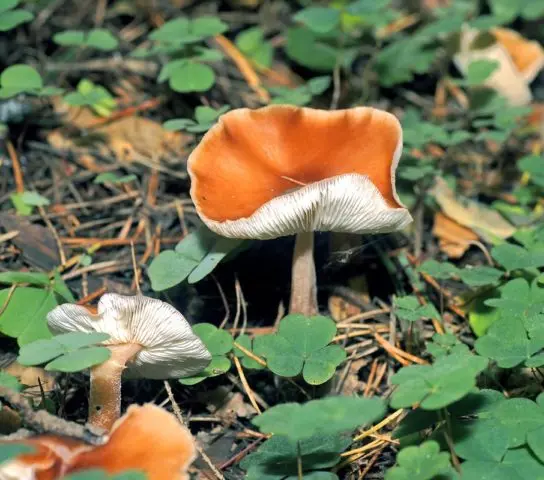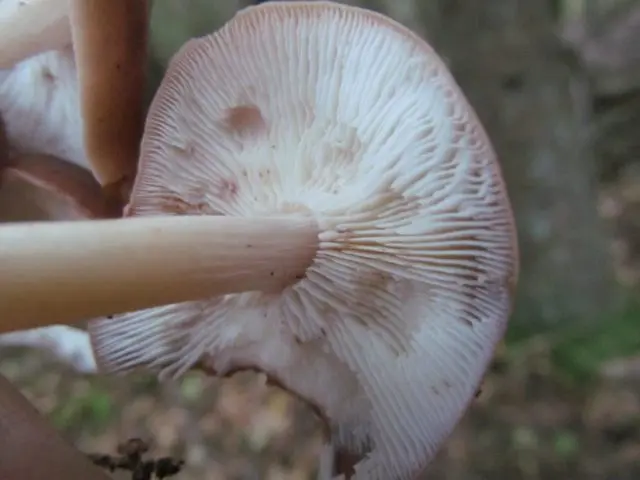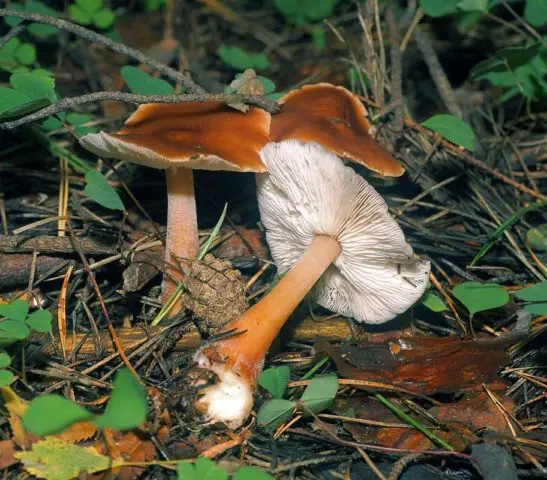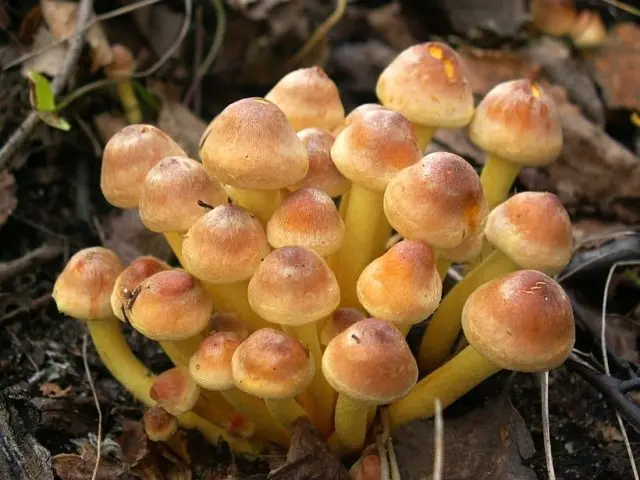Contents
Collibia curved is a conditionally edible mushroom. It is also known under the names: Gimnopus curved, Rhodocollybia prolixa (lat. – wide or large rhodocollybia), Collybia distorta (lat. – curved collybia) and folk – money.
Translated from ancient Greek means “broken penny”. There are many different species in the genus Rhodocollibia with slight external differences.
What does a curved Collibia look like?
Tree fungi belong to the Ryadovkov family, also small ones, past which an inexperienced eye will simply slip by without paying attention.

Cap Description
The diameter of the cap of the species is from 2 to 8 cm. The top is convex, with a central tubercle, and a depression appears with age. The edges are tucked down in young mushrooms, then straighten, sometimes wrapped up. The color of the cap is in soft brown-yellow tones, with light edges. To the touch, the smooth skin is slippery, as if oily. The flesh is light cream, looks fleshy.
From below the plates are frequent, attached to the leg. In young specimens, the caps are white from the inside, then become buffy.

Description of the leg
The legs are hollow inside, 4-8 cm long, curved, thin, up to 8 mm. The deeper the base of the fruiting body in the wood, the more the fibers bend. Those collibia that appear on fallen leaves have straight legs. Powdery coating is noticeable on top of the longitudinal recesses, hairiness below. Color white, brownish underneath.

Is the mushroom edible or not?
Collibia curved is taken in addition to other mushrooms. There are no toxins in the pulp, but the taste may be similar to sawdust. Mushrooms are boiled twice, then fried. The broth is poured out.
Where and how to grow
The species is found in any forests of central Europe and Asia. They grow in large groups on rotting wood, fallen branches or below on coniferous leaf litter. It’s time for the curved collibium – from the 20th of August to October 1-15.
Twins and their differences
There are no poisonous mushrooms similar to the curved collibia that appear on fallen trees. False mushrooms and other representatives of the genus differ markedly in color and shape.

Conclusion
Collybia, curved due to the lack of a pleasant taste, rarely gets into the basket. From the fruiting body of the fungus, only the hat is used for food.









